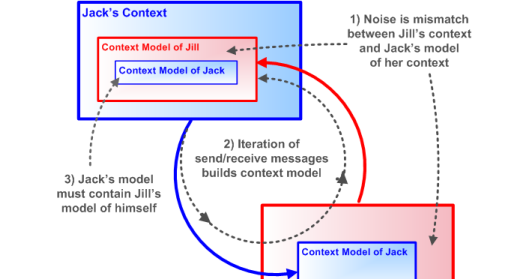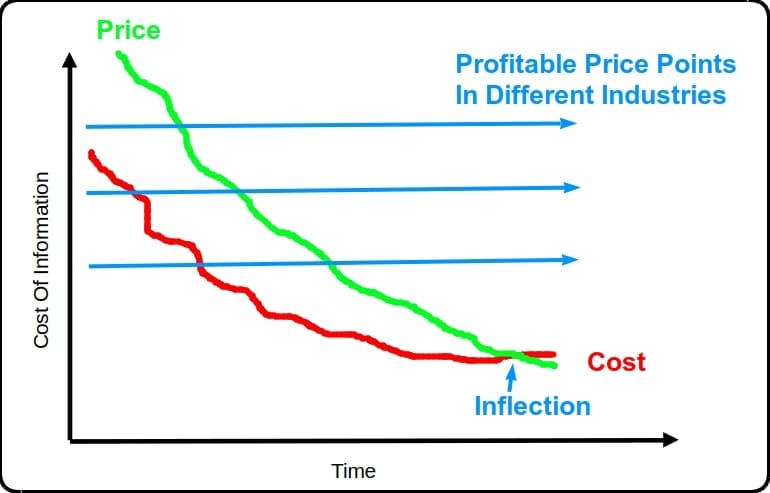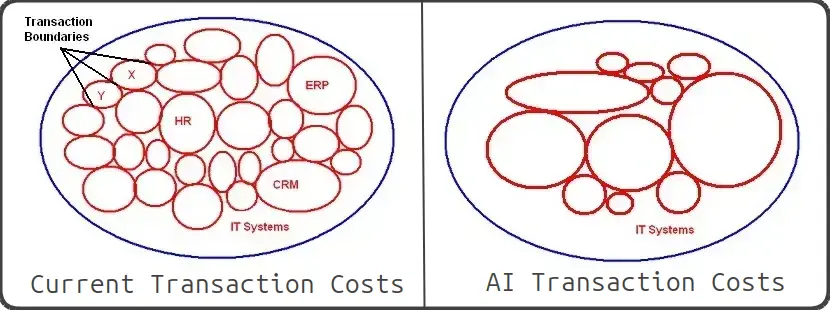Transaction: A state change executed between two entities (institutions).
Essence: The composition of a transaction including components, dependencies, impedance, execution time, etc.
Transaction costs are a sub-case of my reflexive Schramm communication model. (the most popular page on my old website, RealMeme.com, 2,000 hits per month in 2010).

Ronald Coase's theory of transaction costs:
"His aim, he said, was not simply to describe
what life would be in a world without transaction
costs, but rather, "to make clear the role which
transaction costs do, and should, play in the
fashioning of the institutions which make
up the economic system."

The Federal Reserve was created in 1913 when transaction costs were greater than the benefits of locality, so a "one size fits all" ideology was cost effective. But now transaction costs are increasingly encapsulated in computer chips and networks, reducing cost and exposing new areas for profit. What was problematic in the 1860s is an opportunity in the 2020s.

The microchip has altered the essence of transactions, which reflexively alters the nature of institutions. Transaction costs are falling below the benefits of locality.
Transaction boundaries shrink and disappear over time.



Comments